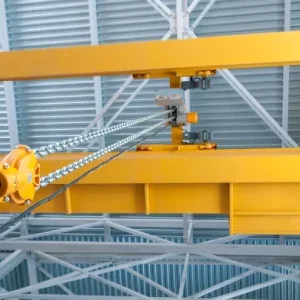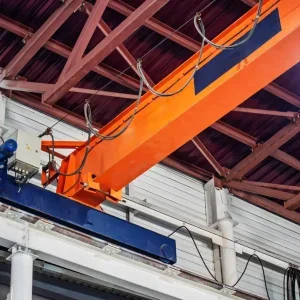A new hoist system devised for tunnel work may yet be part of the salvation of German contractor Bilfinger & Berger as it tries to establish a beachhead in the important North American market, with a first major project in Vancouver, British Columbia. It should keep a machine boring operation running at speed and without unwanted breaks.
Two tunnels are being dug to service a new water processing facility, which will serve 1.2m people in the Vancouver area. The plant will take supplies from two reservoirs, the Seymour and the Capilano. The C$99.6m project is being carried out for the Greater Vancouver Regional Authority, as part of a wider C$600m water supply scheme.
The contractor lost around six months on the first phase of the twin 7km long Caprilano-Seymour water treatment works tunnels, due to mobilisation problems and difficult ground. Western Canada is suffering labour and supply shortages currently as oil sands work booms in next door Alberta. The formation of an initial access shaft 200m deep and TBM (tunnel boring machine) starter pit required more time-consuming drilling and blasting than thought, said Christian Genscher, project manager for the contractor.
It is this shaft that will be serviced by the new hoist, devised by Bilfinger & Berger in a joint design effort with Liebherr Biberach in Germany. It will provide two winch points side-by-side servicing the mucking out of the tunnel throughout the 10 month drives. It will also be used for equipment drops and later for lowering large steel lining sections required for 4km of the tunnel length.
“The hoists will lift mucking out buckets with around 30 cu m capacity,” said Genscher. These have been tailored to take exactly the load of five mucking out railcars which will run up and down the tunnel behind diesel locomotives. They will tip into chutes over the large hoist buckets at a railhead in the 11.5m wide shaft base. Each hoist can lift about 75t.
Rock flakes broken off by the machine head’s 19in cutter discs will drop onto conveyors to fill the cars at the TBM. Other than this limited use, Bilfinger ruled out tunnel conveyors, calculating that, despite the conveyors’ increasing popularity, a rail system was more efficient. “For a shaft height of 180m you are at the limit of what can be done with a vertical conveyor. You need boosters and, if there is a breakdown, it would take a lot of trouble to repair,” says Genscher.
“You need a larger shaft, and you would still need cranage because of the steel cans to go and so on,” he added. There is an additional Manitowoc on site but more would have been needed.
The alternative was the gantry and hoists developed in Wiesbaden, Germany. Specialist designer Horst Gomba explains the system, which is also being used in a smaller format at a site in Malmo, Sweden.
A second TBM has now joined it, tunnelling in parallel 100m apart from the first tunnel.






